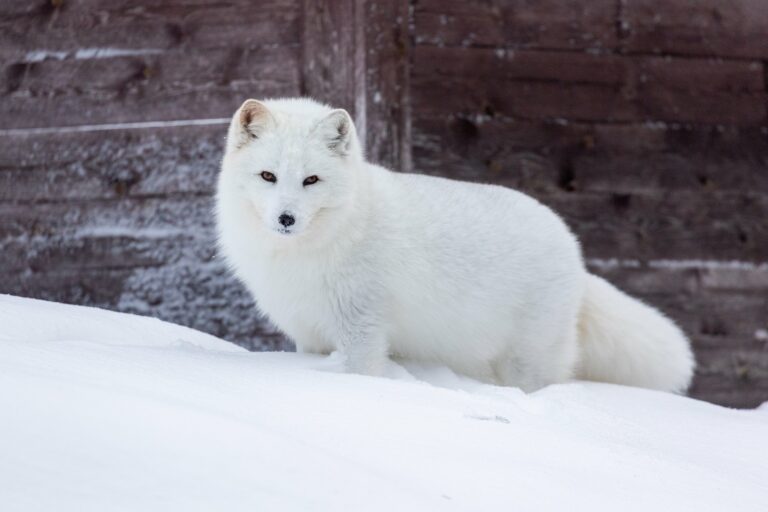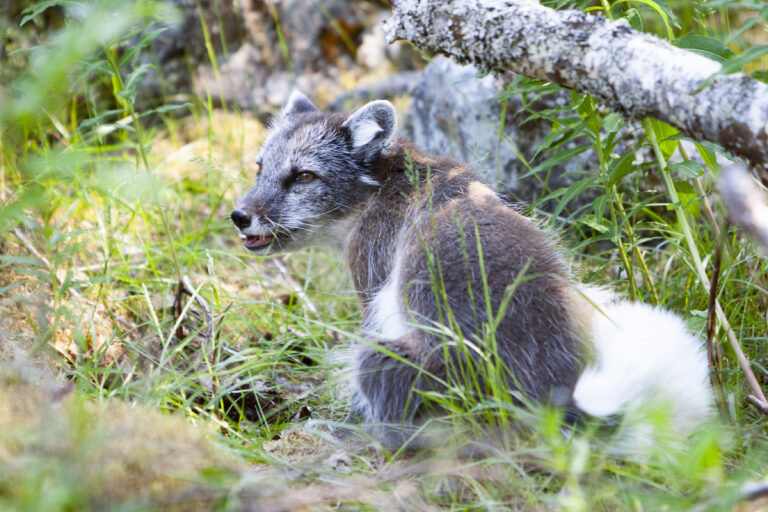
Arctic fox
LIVING HABITS
The arctic fox breeds in tundra areas above the tree line throughout the northern hemisphere. The arctic fox, which is active throughout the day, usually lives alone or together with its mate and family. The arctic fox feeds mostly on small rodents like voles and lemmings, and eats also birds and their eggs, carrion, insects and berries. In Finland the arctic fox lives in the northernmost mountain areas of the communes Utsjoki, Inari and Enontekiö.
PROTECTION
Although on a global scale, arctic foxes are not disappearing, the genetically distinct Fennoscandian population is at risk of extinction. Since 1930 the arctic fox in Finland has been a protected species, yet even today it is listed as the most endangered mammal species in the country. The estimated population of arctic foxes in Finland is below 20 individuals, and even in all of Fennoscandia the population is only about 550 individuals (in 2024). The arctic fox is losing nesting grounds to the larger red fox due to climate change. The peak years of the lemming population, the main nutrition for the arctic fox, have been very rare lately. Part of the problem may also lie in the lack of large predators in the mountain areas, and the reindeer slaughtering done nowadays in slaughterhouses instead in the nature. The arctic fox would gladly scavenge on carrion left by larger predators, as it does when travelling in the steps of the polar bear on the northern ice sheet regions. The long-term protection of the arctic fox in the Nordic countries is slowly showing results; Fennoscandia’s population has increased, and the first successful breeding in Finnish Lapland was recorded in 2022, after a break of more than 25 years.
ADAPTING TO WINTER
The arctic fox is well adapted to living in the arctic environment. In winter it boasts a thick fur of white or silvery-grey colouring, in summer more brownish and thinner. The arctic fox has a much lower surface area to volume ratio compared to its relatives inhabiting warmer regions: it has a short muzzle and legs, and short, thick ears. Since less of its surface area is exposed to the cold, less heat emanates from its body. The arctic fox buries (caches) surplus food in his nest tunnels, and also stores subcutaneous fat reserves under his skin. The fat isolates against the cold, and during periods of scarce food the arctic fox spares his energy, surviving well in the cold. In the coldest days, the arctic fox rests curled up with its tail placed over its muzzle.
Arctic fox
Alopex lagopus
Class: Mammalia – Mammals
Order: Carnivora- Carnivores
Family: Canidae – Canines
Size: Weight: 2,5-8kg, stands at about 30cm at the withers.
Breeding: Heat: March, gestation period: 2 months, offspring: 2-8 at a time. Independent the fall after first summer, sexual maturity reached in about 10 months.
Lifespan: 12 -14 years.


Did you know…
Did you know that the fur of the arctic fox is considered the warmest of all mammals? The arctic fox needs to produce additional inner heat when the temperature drops below – 40°C.











